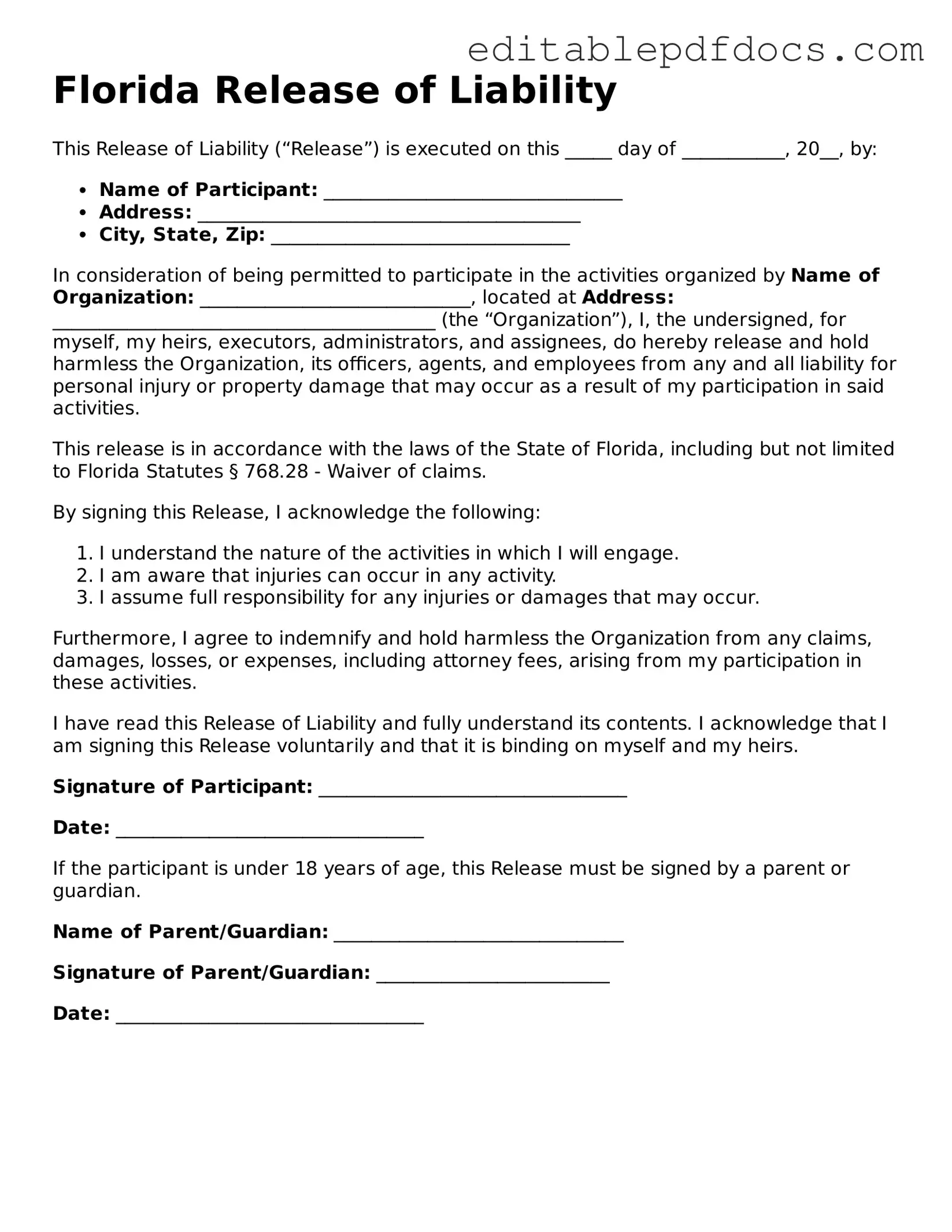Filling out a Florida Release of Liability form can be straightforward, but mistakes are common and can lead to complications. One frequent error is failing to read the entire document carefully. People often skim through the form, missing important details that could affect their rights. Taking the time to understand every section ensures that individuals are fully aware of what they are signing.
Another mistake is not providing accurate information. This includes names, addresses, and dates. Inaccuracies can create confusion and may render the form invalid. Double-checking all entries before submission is crucial to ensure that everything is correct and up to date.
Some individuals neglect to sign the form. A signature is essential as it indicates agreement to the terms outlined in the document. Without a signature, the form holds no legal weight. It’s important to remember that a signature confirms understanding and acceptance of the liability waiver.
Additionally, people sometimes overlook the need for witnesses or notarization. Depending on the specific requirements of the situation, some forms may need a witness or must be notarized to be legally binding. Not adhering to these requirements can lead to challenges down the line.
Another common mistake is misunderstanding the scope of the release. Many individuals assume that signing the form releases them from all liability, but this isn’t always the case. It’s essential to know what risks are being waived and to understand the limitations of the release.
Lastly, failing to keep a copy of the completed form is a frequent oversight. After filling out the Release of Liability, individuals should retain a copy for their records. This can be invaluable if any disputes arise in the future, as it provides evidence of the agreement.
